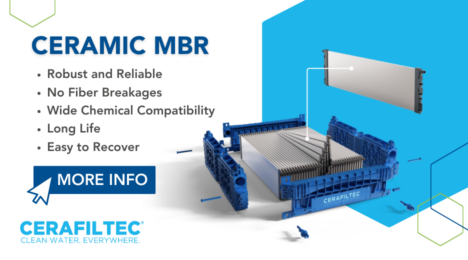The future for membrane bioreactor technologies

Simon Judd has over 35 years’ post-doctorate experience in all aspects of water and wastewater treatment technology, both in academic and industrial R&D. He has (co-)authored six book titles and over 200 peer-reviewed publications in water and wastewater treatment.
It's inevitable that anyone choosing to write a reference text book about MBRs is going to learn a lot. Learning to dispense with certain luxuries (like sleep) would be one of them. Perhaps the most obvious learning point, though, is the development of MBR membrane technologies themselves: the module and process configuration. Having gone through the same process of reviewing the technologies, their specifications and performance three times since 2005, a few pretty firm conclusions can be drawn.
Predictable observations
Possibly the most important observations are the ones which are the most predictable. Ever increasing energy costs have driven improvements in the air scour efficiency of immersed membranes. The newest designs have been demonstrated to achieve specific aeration demand values significantly less than 10 Nm3 air per m3 permeate for municipal wastewaters. Values of 10 for SADp would have been considered the lowest attainable just eight or nine years ago.
The second firm conclusion is that, thanks to modifications to the membrane material, at least for the established products for which early references exist, membrane life has been shown to exceed a decade: the 10 year warranty offered by providers now appears justifiable (at least, once again, for municipal wastewaters).
Thirdly, of course, there has been a significant growth in the number of products offered by companies based in China, primarily to satisfy the demand nationally as manifested by the staggering rate of implementation in that country. Of the approx 60 MBR membrane module technology suppliers we have been able to identify, a third are from China or Taiwan.
On the other hand, there have been other things which have been less predictable. It is, of course, impossible to know with complete certainty whether a new technology will be greeted with success. Some products introduced over the past decade no longer appear to be available on the market, whereas others have been remarkably successful − particularly some of those targeted at the Asia-Pacific region. Some processes, like immersed anaerobic MBRs, have been keenly explored by the academic community on the basis that they offer low-energy and low-waste treatment, effectively powered by the organic load. However, commercialisation appears some way off, and the same applies to the much vaunted microbial fuel cell-based technology.
Less predictable observations
Perhaps the one development that was not as predictable (certainly by myself) is the introduction of immersed flat sheet ceramic membrane technologies. There are now four such products − from four different countries − and perhaps a handful of actual installations, including the high-profile demonstration plant at Olu Pandan, of which much has been trumpeted and almost no technical detail published.
The notion that such technologies may be economically viable for something like municipal wastewater treatment, where there is very little added value and a whole host of established polymeric membrane solutions, would have been almost inconceivable when we were producing the first edition of The MBR Book in the mid noughties. However, as of July 2014, the 1400 p.e. (1.35 <LD peak flow) ItN ceramic membrane-based MBR plant in Petersberg in Germany will have been in operation for over a year. Clearly there must have been a sizable shift in the economics of ceramic membranes for this to have been possible.
Which then begs the question: what next? What does the future hold for MBRs? This is a question put to me with monotonous regularity, and the answer is always the same:
If I really knew what was going to happen, do you think I’d still be doing this job?








